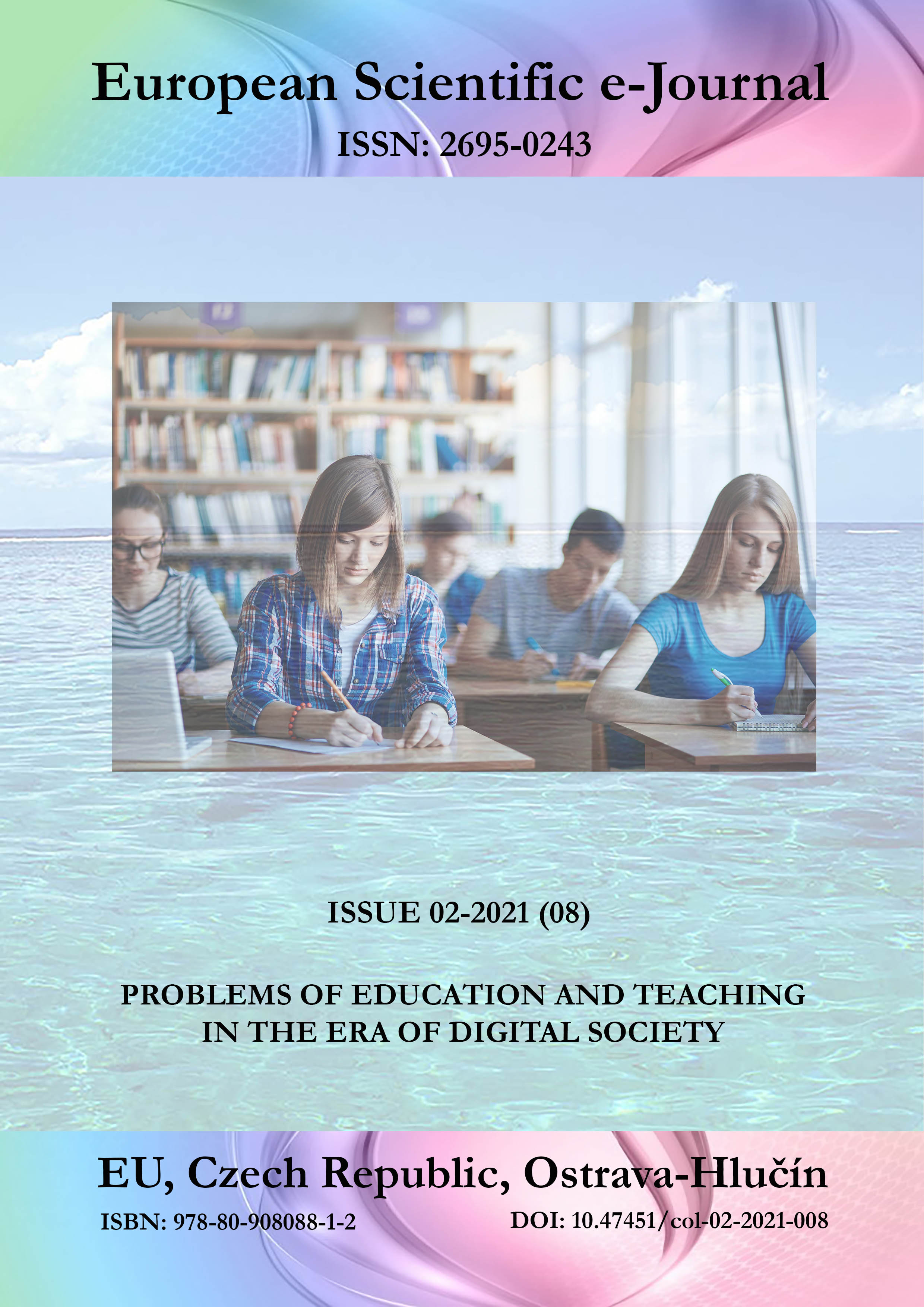The Educational Space of the University of Traditional Applied Arts in the Contours of the Information Society: Qualitative and Quantitative Indicators of Educational Activity
DOI:
https://doi.org/10.47451/ped2021-01-002Keywords:
upbringing, qualitative indicators, quantitative indicators, upbringing system, algorithm, diagnosticsAbstract
The research of the university educational space has great importance for the development of the educative environment. Universities of traditional applied arts need to determine the qualitative and quantitative indicators of educative activities, which contribute to a more detailed analysis of the educative system of future specialists in culture and art. The article analyses the interpretations of the concept of “education”. During the study, points of match and mismatch of the opinions of domestic and foreign researchers in the interpretation of the concept were found. The criteria and methodology for monitoring and evaluating educational results – qualitative and quantitative indicators of educational activity – are presented. The materials of the article are intended for specialists in the space of educational work in higher and secondary special institutions.
Downloads
References
Borytko, N. M. (2001). Teacher in the spaces of modern education. Monograph. Volgograd. (In Russ.)
Chernilevsky, D. V., & Filatov, O. K. (2006). Pedagogy of Higher Education: A textbook for universities. Moscow: Mashinostroenie. (In Russ.)
Davydov, V. V. (Ed.) (1999). Russian pedagogical Encyclopedia. In 2 vols. Vol. 2. Moscow: Big Russian Encyclopedia. (In Russ.)
Karakovsky, V. A., Novikova, L. I., & Selivanova, N. L. (1996). Education? Education… Education!: Theory and practice of school educational systems. Moscow: New School. (In Russ.)
Kolesnikova, I. A., Borytko, N. B., Polyakov, S. D., & Selivanova, N. L. (2007). Educational activity of a teacher: Textbook manual for students of higher educational institutions (3rd ed.). Moscow: Academy. (In Russ.)
Maksimovich, V. F. (2008). Russian folk art is a national fact. Traditional Applied Art and Education: Materials of the 14th International Scientific and Practical Conference. Мoscow: (IPTI). (In Russ.)
Rozhkov, M. I., & Baiborodova, L. V. (2000). Organization of the educational process at school: Textbook for students. higher. schools, institutions. Moscow: Tumanit, Publishing center VLADOS. (In Russ.)
Ruhle, O. (1924). Child and environment; II. Communist school curriculum. [Translated from the German by Marianne Eisenberg]. Leningrad: State Publishing House. (In Russ.)
Selivanova, N. L. (2000). Modern idea of the educational space. Modern concepts of education: Conference Proceedings, 62–72. Yaroslavl: Publishing House of K.D. Ushinsky YAGPU. (In Russ.)
Sukhomlinsky, V. A. (1979). Pavlysh secondary school. Selected works in five volumes. Vol. 4. Kiev: Radyanska School. (In Russ.)
Sukhomlinsky, V. A. (1985). I give my heart to children. Kyiv: Radyanska School. (In Russ.)
Published
Issue
Section
License
Copyright (c) 2025 European Scientific e-Journal

This work is licensed under a Creative Commons Attribution 4.0 International License.
The European Scientific e-Journal (ESEJ) is an open access journal. Articles are available free of charge as PDF files on the website of the European Institute for Innovation Development. PDF files can be previewed with Acrobat Reader from www.adobe.com.
All articles of the “Tuculart Student Scientific” are published under a Creative Commons Attribution 4.0 Generic (CC BY 4.0) International license.
According to the Creative Commons Attribution 4.0 Generic (CC BY 4.0) International license, the users are free to Share — copy and redistribute the material in any medium or format for any purpose, even commercially (the licensor cannot revoke these freedoms as long as you follow the license terms).
Under the following terms:
- Attribution — You must give appropriate credit, provide a link to the license, and indicate if changes were made. You may do so in any reasonable manner, but not in any way that suggests the licensor endorses you or your use.
- No additional restrictions — You may not apply legal terms or technological measures that legally restrict others from doing anything the license permits.


